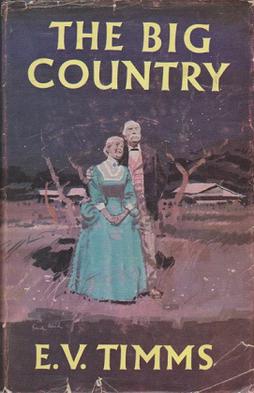Related Research Articles

Jim Gerald born James Fitzgerald was an Australian comedian, circus clown, acrobat, writer, director and troupe leader and filmmaker. Theatre Historian Frank Van Straten has described Gerald as "the quintessential clown... [with] rubbery face... and the loose-limbed body of an acrobat." He is generally cited as one of the leading post-World War I comedians to work the Australasian variety circuits, the others being Nat Phillips, Roy Rene, and George Wallace.
I Killed the Count is a 1937 play by Alec Coppel. Its success launched Coppel's career.
Alec Coppel was an Australian-born screenwriter, novelist and playwright. He spent the majority of his career in London and Hollywood, specialising in light thrillers, mysteries and sex comedies. He is best known for the films Vertigo (1958), The Captain's Paradise (1953), Mr Denning Drives North (1951) and Obsession (1949), and the plays I Killed the Count and The Gazebo.
Edward Vivian Timms (1895–1960), better known as E. V. Timms, was an Australian novelist and screenwriter. He was injured serving in the Gallipoli Campaign during World War I and was an unsuccessful soldier settler before turning to writing. He became a popular novelist, and also wrote scripts for films and radio. He served as an officer during World War II and was on duty the night of the Cowra breakout. He has been called "Australia's greatest historical novelist."

Hills of Hate is a 1926 Australian silent film directed by Raymond Longford, based on the debut novel of a similar name by E. V. Timms, who also wrote the screenplay. It is considered a lost film.
Gambler's Gold is a 1911 Australian film based on the 1911 novel by Arthur Wright. It is considered a lost film.
John P. McLeod was an Australian writer and broadcaster. For a time he was an in-house screenwriter for F.W. Thring at Efftee Studios.

The Long Shadow is a 1949 novel from Australian author Jon Cleary.
The Bookstall series was a series of Australian books published by the NSW Bookstall Company from 1904 onwards.

The Pathway to the Sun is a 1949 novel by Australian author E. V. Timms. It was the second in his Great South Land Saga of historical novels.

The Big Country is an 1962 Australian novel by E. V. Timms and Alma Timms. It was the eleventh in the Great South Land Saga of novels.

James! How Dare You! is a 1940 Australian novel by E. V. Timms. It is a sequel to James! Don't Be a Fool.

Lawrence, Prince of Mecca is a 1927 biographical book about T. E. Lawrence by E. V. Timms writing under the name "David Roseler".

The Cripple in Black is a 1930 Australian novel by E. V. Timms set in seventeenth century Italy and England.
The Mad Doctor is a 1935 novel by Australian author F. J. Thwaites, a melodramatic medical romance set in Africa.
Whispers in Tahiti is an Australian 1940 novel by F. J. Thwaites. It was translated into French.
This article presents a list of the historical events and publications of Australian literature during 1939.
This article presents a list of the historical events and publications of Australian literature during 2017.
This is a list of historical events and publications of Australian literature during 2022.
The Broken Melody is a 1930 Australian novel by F. J. Thwaites. It was Thwaites' debut novel and became a best seller, launching his career. It was turned into a 1938 Australian film and led to a sequel The Melody Lingers.
References
- ↑ "JAMES[?] DON'T BE A FOOL". The Canberra Times . National Library of Australia. 26 August 1927. p. 14. Retrieved 19 October 2014.
- ↑ "HAVE YOU READ?". The World's News . Sydney: National Library of Australia. 27 August 1927. p. 14. Retrieved 19 October 2014.
- ↑ "BROADCASTING". Daily Advertiser . Wagga Wagga, NSW: National Library of Australia. 12 March 1940. p. 7. Retrieved 19 October 2014.